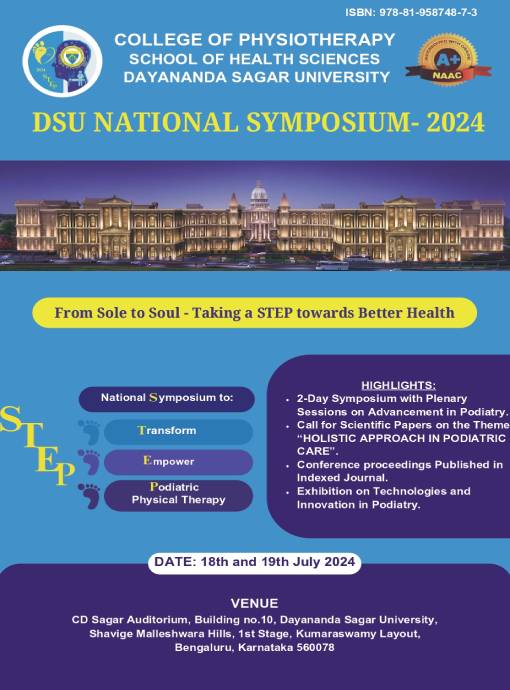Prevalence of Medial Tibial Stress Syndrome Among Recreational Runners and its Association with Foot Posture
DOI:
https://doi.org/10.18311/DSUPHY/9788195874873/2024/025Keywords:
Foot Posture; Medial Tibial Stress Syndrome; Recreational RunnersAbstract
Background: Physical activity, ranging from daily movements to vigorous exercises like recreational running, offers numerous health benefits but can also lead to issues such as Medial Tibial Stress Syndrome (MTSS). MTSS, often mistaken for shin splints, causes significant pain along the inner shinbone and is influenced by training errors and biomechanical issues, including variations in foot posture. The Foot Posture Index (FPI-6) is a crucial tool for assessing foot posture, categorizing it as pronated, neutral, or supinated. Despite its clinical utility, research on foot posture and MTSS among recreational runners in India is limited. This study aims to explore the relationship between foot posture and MTSS in this demographic to enhance understanding and inform preventive strategies.
Aim: The study aims to explore the relationship between foot posture and MTSS in this demographic to enhance understanding and inform preventive strategies.
Methodology: The foot posture of recreational runners was evaluated using the Foot Posture Index-6 (FPI-6) after obtaining informed consent. A comprehensive screening process and clinical examination, including shin palpation and shin oedema tests, were conducted to identify MTSS. The FPI-6 assessed six criteria to classify foot alignment, from highly supinated to highly pronated. Data analysis determined the association between foot posture and MTSS. Participants received educational materials and individualized exercise recommendations based on their foot posture assessment to improve running biomechanics and reduce the risk of MTSS.
Data Analysis: Categorical variables were presented in tables with frequency and percentage values. Quantitative variables were described using descriptive statistics, including mean, median, standard deviation, and 95% confidence intervals. The influence of foot types on MTSS was analyzed using Pearson’s Chi-Square test, with significance defined as P ≤ 0.05.
Results: Among 70 recreational runners, 51.4% were aged 18-23, and 48.6% were aged 24-29, with 75.7% male and 24.3% female. MTSS was present in 71.4% of participants. Foot posture analysis indicated a distribution of normal, pronated, supinated, and highly supinated feet. A significant association between MTSS and FPI-6 scores was observed for the left foot but not for the right foot. The p-value of more than 0.05 suggests foot posture might not significantly associate with MTSS.
 Avi Fernandes
Avi Fernandes
